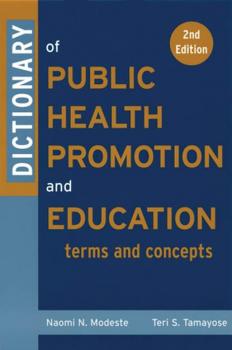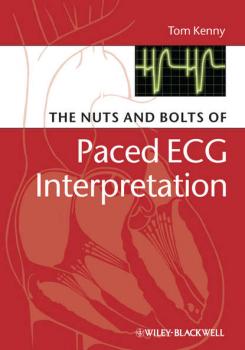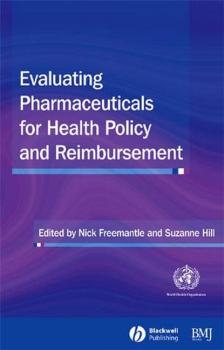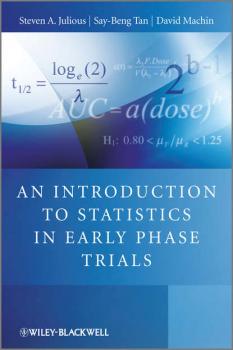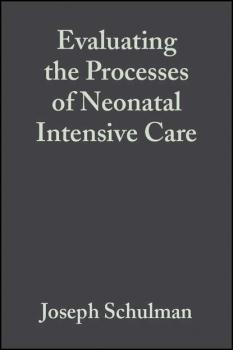ТОП просматриваемых книг сайта:
Медицина
Различные книги в жанре Медицина, доступные для чтения и скачиванияАннотация
Written for public health professionals and students, the Dictionary of Public Health Education and Health Promotion, Second Edition, includes definitions for terms and concepts frequently used in public health education and promotion. The book offers both students and professionals a handy resource and contains a wide range of health education¾related terminologies and effectively eliminates the need for wading through scores of books or articles to find a definition. The book also provides an easily used reference for those working in research or design of public health interventions and Offers a reference list of the terms found most often in the professional literature Includes key terms used in related public health disciplines such as epidemiology, health administration, biostatistics, environmental health, and behavioral sciences Presents terms relevant to the four settings of health promotion and education—community, workplace, primary care, and school Provides a useful study aid when preparing for the exam to become a Certified Health Education Specialist (CHES)
Аннотация
A straightforward presentation of the broad concepts underlying radiological physics and radiation dosimetry for the graduate-level student. Covers photon and neutron attenuation, radiation and charged particle equilibrium, interactions of photons and charged particles with matter, radiotherapy dosimetry, as well as photographic, calorimetric, chemical, and thermoluminescence dosimetry. Includes many new derivations, such as Kramers X-ray spectrum, as well as topics that have not been thoroughly analyzed in other texts, such as broad-beam attenuation and geometrics, and the reciprocity theorem. Subjects are layed out in a logical sequence, making the topics easier for students to follow. Supplemented with numerous diagrams and tables.
Аннотация
Nothing is more perplexing to the clinician new to device therapy than having to deal with cardiac electrocardiograms from a device patient. Pacemakers and other implantable cardiac rhythm management devices leave their “imprint” on ECGs and can significantly change what clinicians see – or expect to see. Evaluating paced ECGs can be challenging, yet nowhere is it taught in any sort of comprehensive manner. Designed specifically for clinicians new to device therapy, The Nuts and Bolts of Interpreting Paced ECGs and EGMs offers practical, reliable and objective information on paced cardiac electrograms. Written in a lively, intelligent and easy to navigate style, emphasizing real-life clinical practice and practical tips, this book includes illustrated paced ECGs by skilled artists to help minimize “fuzzy” lines and emphasize key points. Each chapter concludes with a checklist of key points from each subject (“Nuts and Bolts”).
Аннотация
Since the development of the NMR spectrometer in the 1950s, NMR spectra have been widely used for the elucidation of the 2D structure of newly synthesized and natural compounds. In the 1980s, the high-resolution NMR spectrometer (> 300 Mhz) and 2D experiments were introduced, which opens up the possibility to determine the 3D structure of large molecules, especially biomolecules. However, NMR spectroscopy has been rarely applied to drug analysis. This book illustrates the power and versatility of NMR spectroscopy in the determination of impurities in and the content of drugs, the composition of polymer excipients, the characterization of isomeric drug mixtures, the complexity of drugs with small-size components or ions, and the behavior of drugs in acid and basic solution. In addition, NMR spectroscopy and especially the hyphenated technique with HPLC is shown to be a powerful tool to measure a drug and its metabolites in various body fluids. The solid state NMR technique can give information on the structure, especially the conformation of drugs and excipients in drug formulations. Recently, SAR by NMR, introduced by Fesik, impressively demonstrated the potential of NMR spectroscopy in drug development and in the characterization of the interaction between large molecules and ligands. The complexation between proteins, lipids and cyclodextrins with drugs is described. Finally, NMR imaging (MRI and MRS) can be used to characterize the liberation of drugs from a drug formulation. Furthermore, the distribution of substances in plants, in animals, in tissues and in humans can be visualized by imaging. In short, this book covers all aspects of drug analysis.
Аннотация
“The challenge in all settings is to make the difficult decisions in a way that is defensible, justifiable, ethical, and equitable” So write Nick Freemantle and Suzanne Hill in their introduction to this important discussion on decision making in the reimbursement of pharmaceuticals. Based around a programme supported by the World Health Organization, chapters by leading academics involved in the research tackle such major issues as international pharmaceutical policy, tensions in licensing policies, priority setting, and relationships between the stakeholders. Chapters include Development of marketing authorisation procedures for pharmaceuticals Interpreting clinical evidence International pharmaceutical policy: health creation or wealth creation? Development of fourth hurdle policies around the world Economic modelling in drug reimbursement Priority setting in health care: matching decision criteria with policy objectives Tensions in licensing and reimbursement decisions: case of riluzole for amytrophic lateral sclerosis Relationship between stakeholders: managing the war of words Medicine and the media: good information or misleading hype? How to promote quality use of cost-effective medicines Using economic evaluation to inform health policy and reimbursement: making it happen and making it sustainable Pricing of pharmaceuticals Evaluating pharmaceuticals for health policy in low and middle income country settings. Besides the controversial issues there is a wealth of practical information including economic modelling and the experiences from the WHO programme, providing readers with workable examples. This is essential reading for clinical researchers in pharmaceuticals and policy makers everywhere.
Аннотация
Principles of Psychopharmacology for Mental Health Professionals addresses the current «split» model of mental health care, in which physicians provide pharmaco-therapy while non-prescribing practitioners oversee other services such as psychotherapy. Bringing these two areas together, this book familiarizes mental health professionals with the medications used to treat psychiatric disorders. Prepared by world-renowned psychopharmacologists and psychiatrists, this useful resource helps non-prescribing practitioners understand when and why a given medication is appropriate to use, when it is not indicated, and what potential side effects may occur. Also discussed are the appropriate times in therapy when a referral for a medication evaluation is indicated as well as how to broach this issue with the patient. Recognizing that there are almost always a number of medications from which to choose, the authors combine research outcomes with their extensive clinical experience to highlight the important considerations in selecting one medication over another. As an educational tool, the text encourages and supports clinicians who wish to increase patients' understanding of treatment. After an introduction and overview, chapters cover: * Basics of psychopharmacology * Attention-deficit hyperactivity disorder * Mood disorders * Sleep disorders * Schizophrenia * Cognitive disorders * Anxiety disorders * Personality disorders * Substance use disorders * Traumatic brain injury * Eating disorders * Side effects Every chapter includes diagnostic considerations, history of medication treatments, and emerging trends for each disease. Principles of Psychopharmacology for Mental Health Professionals lays out what psychotherapists and other mental health practitioners need to know about psychotropic medications, giving them and their patients an invaluable guide to the full array of treatments available.
Аннотация
All new medicines and devices undergo early phase trials to assess, interpret and better understand their efficacy, tolerability and safety. An Introduction to Statistics in Early Phase Trials describes the practical design and analysis of these important early phase clinical trials and provides the crucial statistical basis for their interpretation. It clearly and concisely provides an overview of the most common types of trials undertaken in early phase clinical research and explains the different methodologies used. The impact of statistical technologies on clinical development and the statistical and methodological basis for making clinical and investment decisions are also explained. Conveys key ideas in a concise manner understandable by non-statisticians Explains how to optimise designs in a constrained or fixed resource setting Discusses decision making criteria at the end of Phase II trials Highlights practical day-to-day issues and reporting of early phase trials An Introduction to Statistics in Early Phase Trials is an essential guide for all researchers working in early phase clinical trial development, from clinical pharmacologists and pharmacokineticists through to clinical investigators and medical statisticians. It is also a valuable reference for teachers and students of pharmaceutical medicine learning about the design and analysis of clinical trials.
Аннотация
A key text for all those involved in pharmacovigilance. Detection of new adverse drug reactions is fundamental to the protection of patients from harm that may occur as a result of medication. This book explores the methods used to investigate new adverse drug reactions, discussing all elements from the scientific background and animal toxicology through to worldwide regulatory and ethical issues. Stephens' Detection of New Adverse Drug Reactions provides comprehensive and up-to-date coverage of material fundamentally important to all those active in the field, whether they work in the pharmaceutical industry, drug regulatory authorities or in academia. The fifth edition of this classic reference work includes new chapters on: vaccine safety surveillance managing drug safety issues with marketed products operational aspects of drug safety function safety of biotechnology products future of pharmacovigilance Reviews of previous editions: «This book surpasses all its educational aims. Not only is the subject matter covered comprehensively but the material is presented in a very user-friendly manner. The editors have succeeded in producing a highly-specific, definitive reference book which doubles as a most enjoyable read.» —Commended by the 1999 BMA Medical Book Competition «For anyone entering the field of adverse reaction monitoring one could not wish for a better primer» —International Journal of Risk and Safety in Medicine
Аннотация
A unique, holistic approach covering all functions and phases of pharmaceutical research and development While there are a number of texts dedicated to individual aspects of pharmaceutical research and development, this unique contributed work takes a holistic and integrative approach to the use of computers in all phases of drug discovery, development, and marketing. It explains how applications are used at various stages, including bioinformatics, data mining, predicting human response to drugs, and high-throughput screening. By providing a comprehensive view, the book offers readers a unique framework and systems perspective from which they can devise strategies to thoroughly exploit the use of computers in their organizations during all phases of the discovery and development process. Chapters are organized into the following sections: * Computers in pharmaceutical research and development: a general overview * Understanding diseases: mining complex systems for knowledge * Scientific information handling and enhancing productivity * Computers in drug discovery * Computers in preclinical development * Computers in development decision making, economics, and market analysis * Computers in clinical development * Future applications and future development Each chapter is written by one or more leading experts in the field and carefully edited to ensure a consistent structure and approach throughout the book. Figures are used extensively to illustrate complex concepts and multifaceted processes. References are provided in each chapter to enable readers to continue investigating a particular topic in depth. Finally, tables of software resources are provided in many of the chapters. This is essential reading for IT professionals and scientists in the pharmaceutical industry as well as researchers involved in informatics and ADMET, drug discovery, and technology development. The book's cross-functional, all-phases approach provides a unique opportunity for a holistic analysis and assessment of computer applications in pharmaceutics.
Аннотация
An essential guide for evaluating outcomes and improving practice in the neonatal intensive care unit – an aspect of neonatal intensive care that is not covered in standard texts. Written by a neonatologist with experience in outcomes research, the book engages Neonatal Intensive Care Unit (NICU) workers with vitally important questions about their work: What is a good NICU? Could you achieve better results? How completely can you characterize the results of your NICU?

